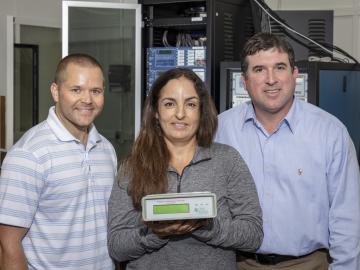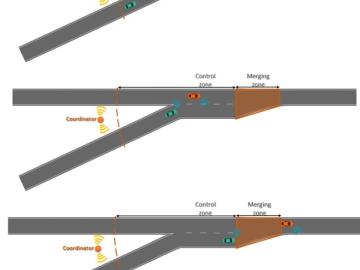
Filter News
Area of Research
- (-) Energy Science (48)
- (-) National Security (6)
- Advanced Manufacturing (1)
- Biology and Environment (16)
- Computer Science (1)
- Fusion Energy (1)
- Isotopes (1)
- Materials (35)
- Materials for Computing (5)
- Neutron Science (36)
- Nuclear Science and Technology (6)
- Quantum information Science (2)
- Supercomputing (34)
News Type
News Topics
- (-) Big Data (2)
- (-) Bioenergy (10)
- (-) Biomedical (3)
- (-) Composites (1)
- (-) Environment (15)
- (-) Grid (9)
- (-) Machine Learning (5)
- (-) Microscopy (3)
- (-) Neutron Science (5)
- (-) Quantum Science (2)
- (-) Summit (4)
- (-) Transportation (16)
- 3-D Printing/Advanced Manufacturing (18)
- Advanced Reactors (2)
- Artificial Intelligence (4)
- Biology (2)
- Biotechnology (1)
- Chemical Sciences (2)
- Clean Water (1)
- Computer Science (14)
- Coronavirus (8)
- Cybersecurity (4)
- Energy Storage (17)
- Exascale Computing (1)
- High-Performance Computing (1)
- Isotopes (1)
- Materials (2)
- Materials Science (12)
- Mathematics (1)
- Mercury (1)
- Molten Salt (1)
- Nanotechnology (5)
- National Security (2)
- Nuclear Energy (2)
- Physics (1)
- Polymers (4)
- Security (6)
- Space Exploration (1)
Media Contacts

A novel approach developed by scientists at ORNL can scan massive datasets of large-scale satellite images to more accurately map infrastructure – such as buildings and roads – in hours versus days.

To better determine the potential energy cost savings among connected homes, researchers at Oak Ridge National Laboratory developed a computer simulation to more accurately compare energy use on similar weather days.

Thought leaders from across the maritime community came together at Oak Ridge National Laboratory to explore the emerging new energy landscape for the maritime transportation system during the Ninth Annual Maritime Risk Symposium.

As Puerto Rico works to restore and modernize its power grid after last year’s devastating hurricane season, researchers at Oak Ridge National Laboratory have stepped up to provide unique analysis, sensing and modeling tools to better inform decisions.

Self-driving cars promise to keep traffic moving smoothly and reduce fuel usage, but proving those advantages has been a challenge with so few connected and automated vehicles, or CAVs, currently on the road.

Oak Ridge National Laboratory scientists have devised a method to control the heating and cooling systems of a large network of buildings for power grid stability—all while ensuring the comfort of occupants.
Scientists studying a valuable, but vulnerable, species of poplar have identified the genetic mechanism responsible for the species’ inability to resist a pervasive and deadly disease. Their finding, published in the Proceedings of the National Academy of Sciences, could lead to more successful hybrid poplar varieties for increased biofuels and forestry production and protect native trees against infection.

Biologists from Oak Ridge National Laboratory and the Smithsonian Environmental Research Center have confirmed that microorganisms called methanogens can transform mercury into the neurotoxin methylmercury with varying efficiency across species.

Oak Ridge National Laboratory scientists have developed a crucial component for a new kind of low-cost stationary battery system utilizing common materials and designed for grid-scale electricity storage. Large, economical electricity storage systems can benefit the nation’s grid ...

The U.S. Department of Energy’s Oak Ridge National Laboratory today unveiled Summit as the world’s most powerful and smartest scientific supercomputer.


